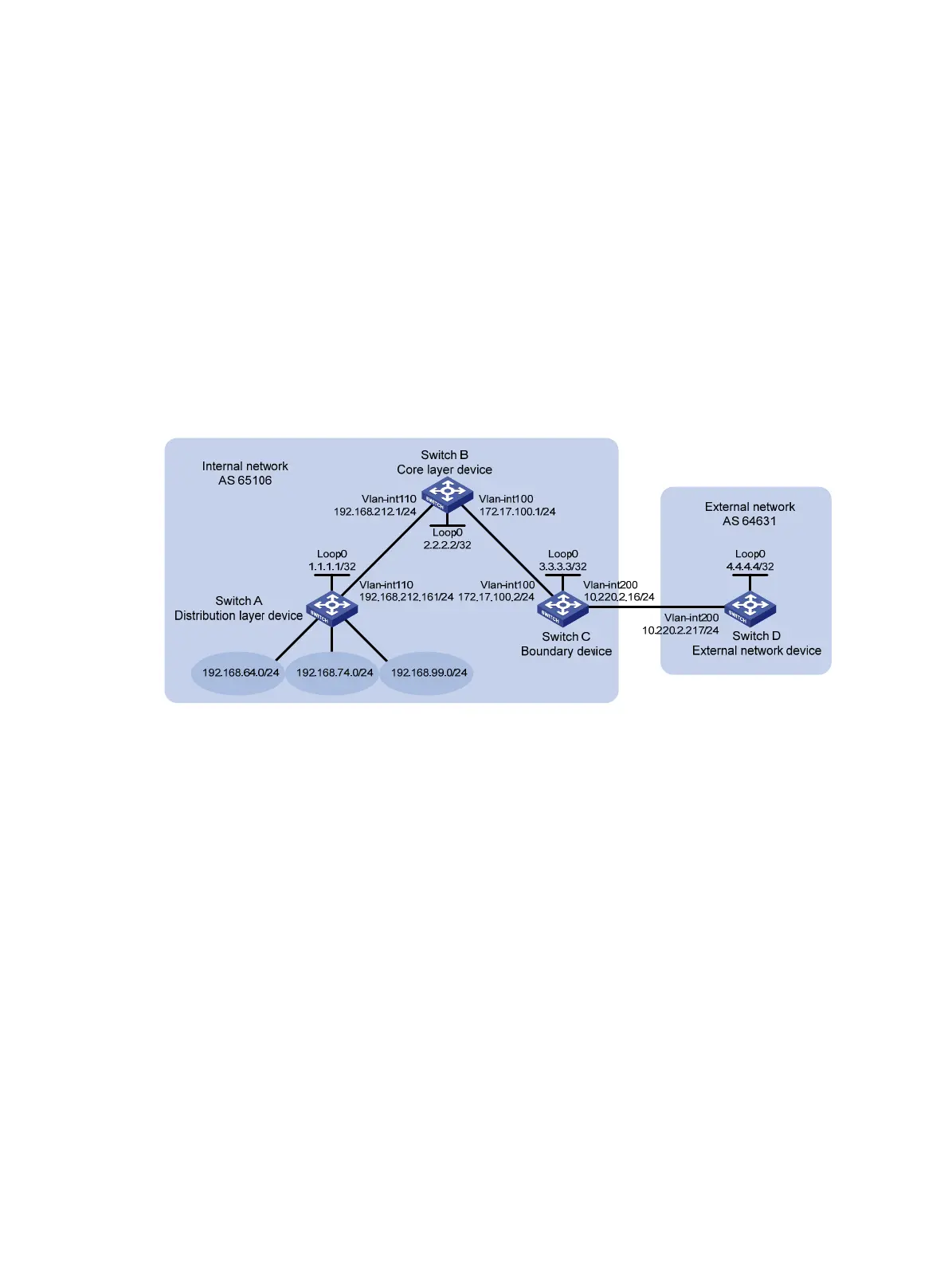264
BGP route summarization configuration example
Network requirements
As shown in Figure 65, run EBGP between Switch C and Switch D, so the internal network and
external network can communicate with each other.
• In AS 65106, perform the following configurations so the devices in the internal network can
communicate:
{ Configure static routing between Switch A and Switch B.
{ Configure OSPF between Switch B and Switch C.
{ Configure OSPF to redistribute static routes.
• Configure route summarization on Switch C so BGP advertises a summary route instead of
advertising routes to the 192.168.64.0/24, 192.168.74.0/24, and 192.168.99.0/24 networks to
Switch D.
Figure 65 Network diagram
Configuration procedure
1. Configure IP addresses for interfaces. (Details not shown.)
2. Configure static routing between Switch A and Switch B:
# Configure a default route with the next hop 192.168.212.1 on Switch A.
<SwitchA> system-view
[SwitchA] ip route-static 0.0.0.0 0 192.168.212.1
# Configure static routes to 192.168.64.0/24, 192.168.74.0/24, and 192.168.99.0/24 with the
same next hop 192.168.212.161 on Switch B.
<SwitchB> system-view
[SwitchB] ip route-static 192.168.64.0 24 192.168.212.161
[SwitchB] ip route-static 192.168.74.0 24 192.168.212.161
[SwitchB] ip route-static 192.168.99.0 24 192.168.212.161
3. Configure OSPF between Switch B and Switch C and configure OSPF on Switch B to
redistribute static routes:
# Configure OSPF to advertise the local network and enable OSPF to redistribute static routes
on Switch B.
[SwitchB] ospf
[SwitchB-ospf-1] area 0
[SwitchB-ospf-1-area-0.0.0.0] network 172.17.100.0 0.0.0.255
[SwitchB-ospf-1-area-0.0.0.0] quit

